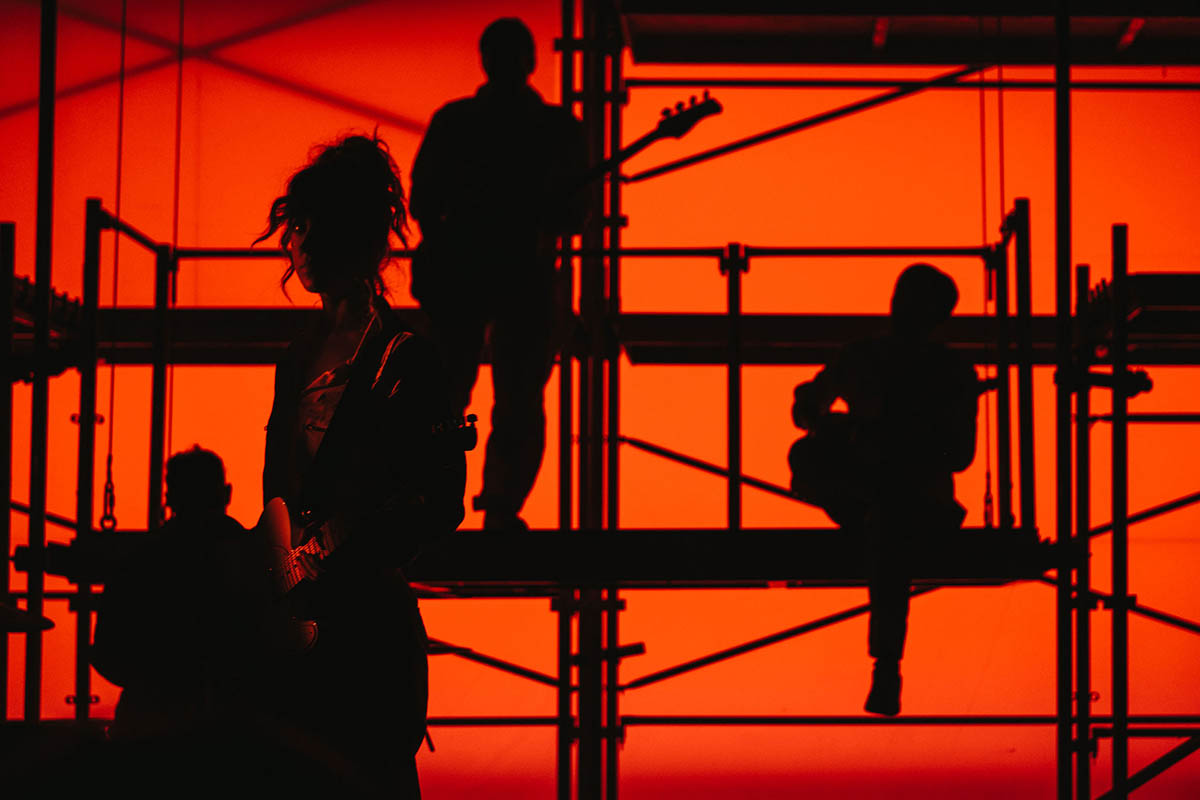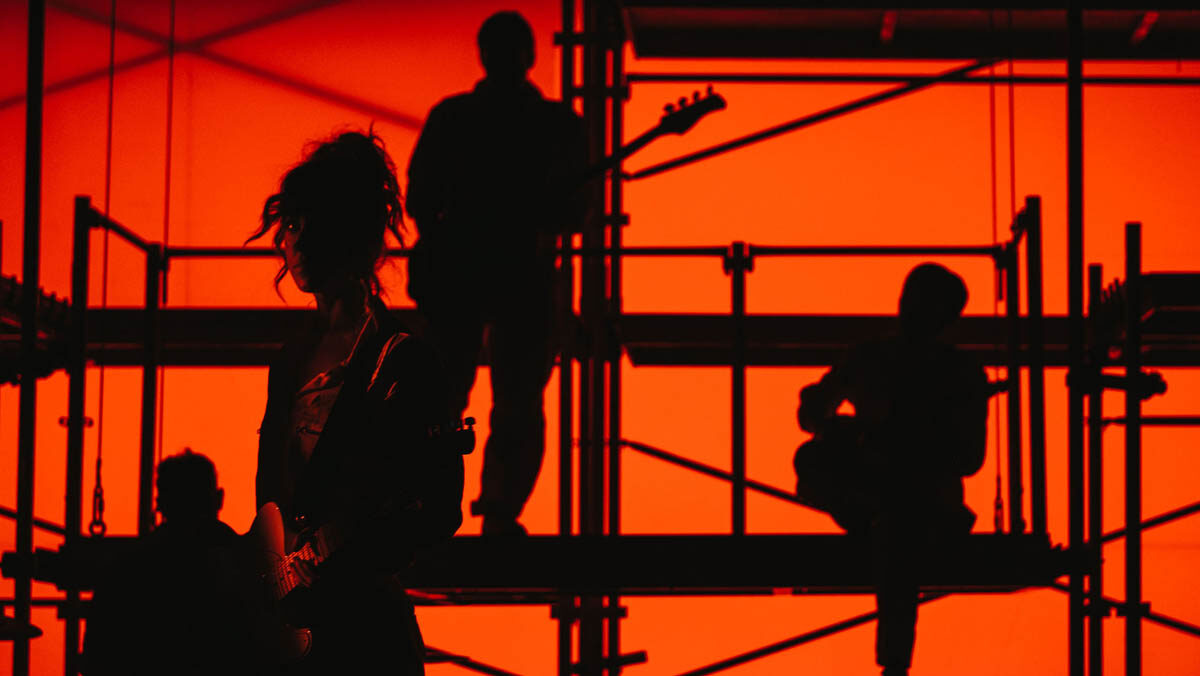
Für die neue Single „DREAMS“ veröffentlicht die Band nun ein Musikvideo, das an keinem geringeren Schauplatz als auf der großen Bühne des Volkstheaters gedreht wurde.
Wie ein Reiseführer begleitet einen das Debutalbum durch die verschiedenen Phasen der Trauer. Wenn auch mentale Gesundheit immer weiter in den medialen Fokus rücken darf so werden Trauer, Tod, Erkrankung nach wie vor stark tabuisiert. Was zunächst aus der schieren Notwendigkeit zur Verarbeitung entstand wurde durch den Schaffungsprozesses des Albums immer mehr zu einer bewussten Entscheidung mit dem persönlichen Verlust offen (und öffentlich) umzugehen. Radikale Offenheit als Versuch dem Schmerz die Stirn zu bieten und eine ausgestreckte Hand für all jene, denen es ähnlich geht. Die Single „DREAMS“ beleuchtet besonders die Zeit unmittelbar nach dem Verlust. Für jede:n individuell war diese für die Musikerin & Texterin geprägt von allem, das auf einmal weg fiel: Hoffnung, Perspektive, Wurzeln, Identität, Zuhause.
Auch die visuelle Umsetzung ist besonders geprägt von Auslassungen. Dafür holte sich die Band Unterstützung von Max Hammel. Gedreht wurde auf einem Bühnenbild von Michael Sieberock-Serafimowitsch. Dabei wurde die Band selbst zur Projektionsfläche. In weißen Anzügen performen die Vier zwischen einer kolossalen LED Wall und der Beamer Projektion, und werden so selbst Teil der Videoinstallationen. Unter stroboskop-artigen Lichtblitzen kämpft sich die Band im fulminanten Outro des Songs zurück ins Licht.
Echolight – www.instagram.com/echolightmusic




